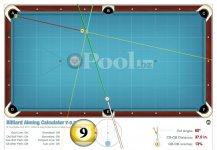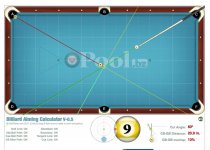I don't know about anyone else but when I went to see Stan on my travels I spent a day challenging him.
I told him I would take all the "naysayer" points and challenge him to see what he could show me on the table that refuted them.
My friend Andreas Sattler from Germany was there with me. Andi is an open level player - what we would call a 9-10 speed in America, so no slouch. And of course he is trained in the "German Perfect Form" way that they all are over there.
To say Andi's mind was blown is an understatement. Prior to going there he indulged my little CTE obsession the way someone does when their friend can't stop talking about something, with a "that's nice" essentially.
And frankly I didn't know what to expect either. But I wasn't going in to blow smoke up Stan's ass either.
If anyone were going to be able to rebut the naysayer points then he ought to be able to.
The man displayed the system's ability to handle every shot thrown at him. EVERY SHOT.
IF there was a shot where he could not find a CTE solution then he would explain why and what the remedy was. Essentially the remedy was to go old school and figure it out with trial and error. But the shots which had no CTE solution were literally just a few over the course of several hours of challenging him. It was frankly ridiculous how easily Stan was making shots to all pockets, banks, multi-rail banks and so on.
I had an unbiased witness there. Someone who had zero clue about these debates, A guy who drives a truck across Europe and didn't get into pool discussions.
Andi eagerly tried the shots and he was not as consistent as Stan. I ended up buying him a full lesson on CTE and Andi uses it to this day and feels it does work as claimed.
But the point is that I played Devil's Advocate and didn't hold back. So, honestly when someone tells me that CTE is not objective (practically speaking) and has holes, I ask you to please show me where the holes are. What I got from my time with Stan is that not making shots when using CTE comes from three things, picking the wrong solution or the wrong execution or a combination of wrong solution and bad execution.
So the end result for me is that I saw that CTE is a tool but like most good tools requires practice to get to an expert user level.
I told him I would take all the "naysayer" points and challenge him to see what he could show me on the table that refuted them.
My friend Andreas Sattler from Germany was there with me. Andi is an open level player - what we would call a 9-10 speed in America, so no slouch. And of course he is trained in the "German Perfect Form" way that they all are over there.
To say Andi's mind was blown is an understatement. Prior to going there he indulged my little CTE obsession the way someone does when their friend can't stop talking about something, with a "that's nice" essentially.
And frankly I didn't know what to expect either. But I wasn't going in to blow smoke up Stan's ass either.
If anyone were going to be able to rebut the naysayer points then he ought to be able to.
The man displayed the system's ability to handle every shot thrown at him. EVERY SHOT.
IF there was a shot where he could not find a CTE solution then he would explain why and what the remedy was. Essentially the remedy was to go old school and figure it out with trial and error. But the shots which had no CTE solution were literally just a few over the course of several hours of challenging him. It was frankly ridiculous how easily Stan was making shots to all pockets, banks, multi-rail banks and so on.
I had an unbiased witness there. Someone who had zero clue about these debates, A guy who drives a truck across Europe and didn't get into pool discussions.
Andi eagerly tried the shots and he was not as consistent as Stan. I ended up buying him a full lesson on CTE and Andi uses it to this day and feels it does work as claimed.
But the point is that I played Devil's Advocate and didn't hold back. So, honestly when someone tells me that CTE is not objective (practically speaking) and has holes, I ask you to please show me where the holes are. What I got from my time with Stan is that not making shots when using CTE comes from three things, picking the wrong solution or the wrong execution or a combination of wrong solution and bad execution.
So the end result for me is that I saw that CTE is a tool but like most good tools requires practice to get to an expert user level.

